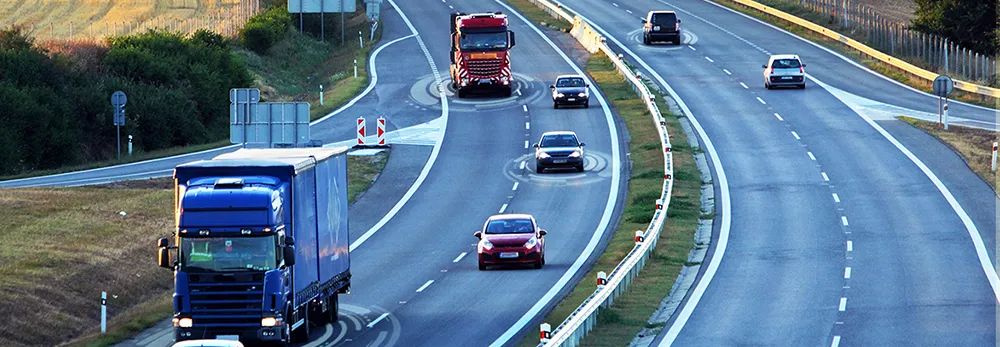According to the US Department of Transportation (USDOT), an average of ten drivers in the US is killed and more than 1,100 people are injured every day as a result of accidents caused by distracted drivers. To address this ongoing concern, automotive supplier Continental has developed a concept vehicle, the driver focus vehicle, where driver assistance systems are linked to a highly versatile LED light strip to create a powerful tool against driver distraction. In its driver focus vehicle, Continental has
February 8, 2013
Read time: 3 mins
According to the 324 US Department of Transportation (USDOT), an average of ten drivers in the US is killed and more than 1,100 people are injured every day as a result of accidents caused by distracted drivers.
To address this ongoing concern, automotive supplier260 Continental has developed a concept vehicle, the driver focus vehicle, where driver assistance systems are linked to a highly versatile LED light strip to create a powerful tool against driver distraction.
In its driver focus vehicle, Continental has integrated current advanced driver assistance active safety technology with a future interior monitoring system and visual human-machine interface (HMI) technology that provides the driver with a virtual safety-focused companion, or co-pilot, that constantly scans the vehicle's external and internal environments. Coupling these technologies works to make sure the driver's actions and attentiveness match the real time needs of the driving situation.
"The integration of surrounding and in-cabin safety technologies gives us the ability to create a very real relationship between the driver, the vehicle and the environment," said Helmut Matschi, executive board member and president of Continental's interior division. "With the driver focus vehicle technology we are for the first time able to communicate to the driver based on both the driving situation and in relation to his ability to react at this point in time. It represents the ultimate in HMI, delivering the integration of technology, information and safety systems in a way that supports and assists the driver toward a safer and more enjoyable experience."
"Human error is the single cause for about 80 per cent of traffic accidents. Among these, driver distraction is a serious issue and plays a major role. The reasons are complex and range from driver drowsiness and monotonous driving situations to increased driver stress and information overload”, said Dr Ralf Cramer, executive board member and president of the chassis and safety division of Continental. “To combat these realities, Continental utilises active safety technology to advise drivers of the dangers and assist if necessary.”
Interior safety technology in the driver focus vehicle includes:
• An infrared driver analyser camera positioned in the vehicle's steering column which recognises a driver's facial behaviour, such as eye and head movements, that can indicate that the driver is drowsy or has his head turned away from the road in a critical situation.
• Halo, an industry-first 360 degree in-cabin optical guidance feature that is integrated with both the interior infrared camera to assist with driver distraction and with ADAS technologies to alert the driver of critical situations.
Surrounding safety technologies include lane departure warning (LDW), adaptive cruise control (ACC) takeover and forward collision warning.
To address this ongoing concern, automotive supplier
In its driver focus vehicle, Continental has integrated current advanced driver assistance active safety technology with a future interior monitoring system and visual human-machine interface (HMI) technology that provides the driver with a virtual safety-focused companion, or co-pilot, that constantly scans the vehicle's external and internal environments. Coupling these technologies works to make sure the driver's actions and attentiveness match the real time needs of the driving situation.
"The integration of surrounding and in-cabin safety technologies gives us the ability to create a very real relationship between the driver, the vehicle and the environment," said Helmut Matschi, executive board member and president of Continental's interior division. "With the driver focus vehicle technology we are for the first time able to communicate to the driver based on both the driving situation and in relation to his ability to react at this point in time. It represents the ultimate in HMI, delivering the integration of technology, information and safety systems in a way that supports and assists the driver toward a safer and more enjoyable experience."
"Human error is the single cause for about 80 per cent of traffic accidents. Among these, driver distraction is a serious issue and plays a major role. The reasons are complex and range from driver drowsiness and monotonous driving situations to increased driver stress and information overload”, said Dr Ralf Cramer, executive board member and president of the chassis and safety division of Continental. “To combat these realities, Continental utilises active safety technology to advise drivers of the dangers and assist if necessary.”
Interior safety technology in the driver focus vehicle includes:
• An infrared driver analyser camera positioned in the vehicle's steering column which recognises a driver's facial behaviour, such as eye and head movements, that can indicate that the driver is drowsy or has his head turned away from the road in a critical situation.
• Halo, an industry-first 360 degree in-cabin optical guidance feature that is integrated with both the interior infrared camera to assist with driver distraction and with ADAS technologies to alert the driver of critical situations.
Surrounding safety technologies include lane departure warning (LDW), adaptive cruise control (ACC) takeover and forward collision warning.









